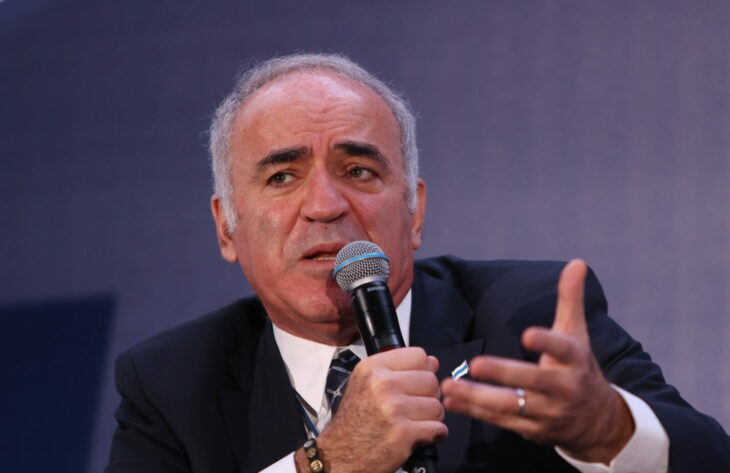
On a frigid December day nearly 340 years ago, two dozen Russian soldiers shuffled out of a fort on the north bank of the Amur River. Stranded thousands of miles from Moscow, the hungry and humiliated men were the only survivors of a Russian expedition many orders of magnitude larger, which was all but annihilated over a year of intermittent Chinese sieges.
In 1689, the defeated Russians signed a treaty with the Qing Empire relinquishing many of their Far Eastern claims. When emissaries of Russian regent Sophia Alekseyevna – half-sister of the future Peter the Great – and the Kangxi Emperor initialed that document, New York and Boston were muddy colonial trading posts. Washington, DC didn’t exist at all; the founders of the republic whose capital it would become were not born for another two generations.
I say all this to appeal to Americans commenting on Russia-China relations: some humility, please.
During his first months back in office, President Donald Trump has run a Russia-friendly foreign policy under the pretext of peeling Moscow away from China. Both critics and defenders of this approach have described it as a “reverse Nixon,” a reference to Richard Nixon’s 1972 opening to communist leader Mao Zedong, which split Red China from the USSR. It is bound to fail.
The American nation is a young one. The citizens of this country possess many admirable qualities, but a deep awareness of history is not one of them. Those of us who grew up in the Soviet Union or China had history drilled into our brains—a highly skewed version of events, to be sure, but we had a sense of where we came from.
Nixon’s China moment was an impressive coup for US foreign relations in its day. But it was more a tactical ploy in the context of the Cold War than a strategic realignment. Nixon’s successors failed to build upon his engagement with Beijing. Perhaps they never really could have. Without significant democratic change in China, a political relationship between an authoritarian PRC and a free USA would always rest on flimsy foundations, with both sides awkwardly skirting a clash over Taiwan, North Korea, or human rights violations. The same can also be said for a hypothetical US-Russia alliance.
The Nixon-Mao honeymoon was also a vanishingly brief blip in a long history. Russia and China have been bound together in a parasitic relationship for hundreds of years. In the seventeenth century, China eclipsed Russia. Another set of treaties in 1858 and 1860 saw the tables turn. Russia recovered the territories it ceded in 1689 and then some, joining a host of other imperial powers in the partition of a sickly China. Russia would eclipse China for the next century. Since 1991, China has resumed its senior role in the relationship, drawing Russia closer from a position of strength. So tight was the embrace by the beginning of the last decade that my late friend Boris Nemtsov quipped that Vladimir Putin was a Chinese spy.
A Cold War-era map showing the evolution of the border between China and the USSR/Russia. The red line is the border set by the 1689 Treaty of Nerchinsk. The tan area is the territory ceded to Russia by China under the 1858 Treaty of Aigun. The red area is the territory ceded to Russia by China under the 1860 Convention of Peking.
Nevertheless, this arrangement works for both sides. The Kremlin has a powerful enabler for its aggression in Ukraine. China gets both a lackey to do its dirty work wreaking havoc in the West and a pliant neighbor on one of its longest borders. Accordingly, Russia will not flip to the American camp absent a sharp U-turn on US foreign policy that likely goes beyond even what Trump’s Republican Party might entertain.
And if Trump’s “reverse Nixon” had legs, the Chinese would not let Russia go so easily. When Xi visited Moscow last week, he was there to squeeze Putin for loyalty. Both dictators are keenly aware that the thinly-defended Amur River basin has not always been Russian territory and that Vladivostok is not an ancient Russian city. In fact, to tourists and businesspeople coming from China, it isn’t Vladivostok at all, but Haishenwai. When I visited Irkutsk in 2005, a local wryly lamented that those Chinese visitors were crossing the border in small groups of 100,000 each. In the intervening twenty years, the Chinese presence in Moscow’s Far East possessions has grown apace. Meanwhile, socio-economic decay, and, more recently, aggressive military conscription for the Ukrainian meatgrinder, have sapped the Russian population there.
America is still the world’s foremost power. But Trump’s attempt to break up Russia and China isn’t shrewd diplomacy. It simply places the United States at the bottom of a Chinese-dominated food chain. The contradictions of going hard on China while going soft on Russia are becoming clear as Xi keeps Moscow firmly in Beijing’s orbit.
US resources would be better organized in service of assembling a grand coalition to confront the China-Russia axis rather than trying vainly to co-opt it.




